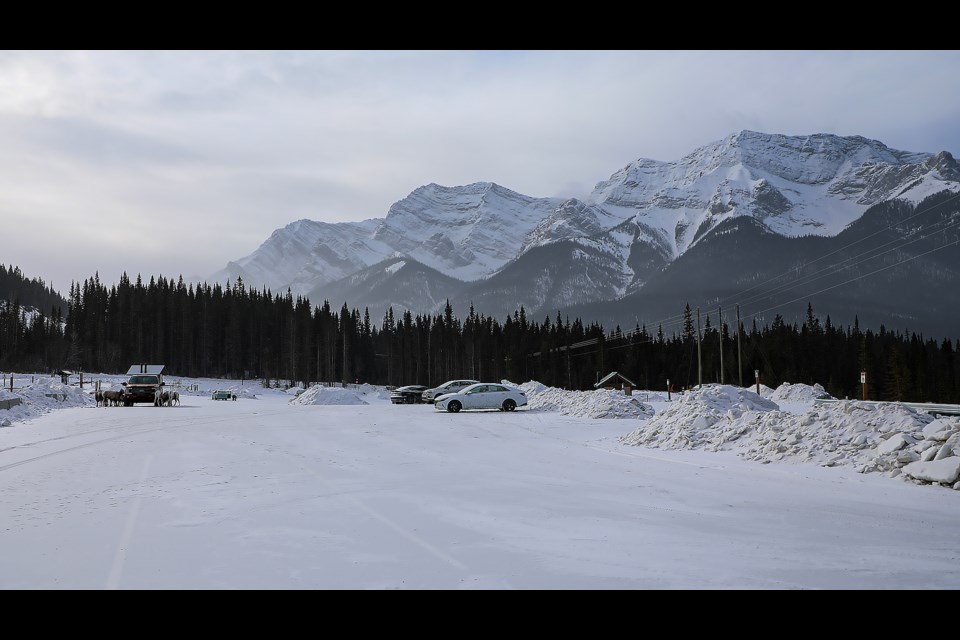KANANASKIS COUNTRY – It was another record year for emergency calls for the Kananaskis Emergency Services Centre (KESC) in 2023.
From January to December, there were 308 calls to KESC, up from 241 calls, or a 28 per cent increase from 2022.
“Interesting to note, it is a 97 per cent increase from 2021, so when we go back two years, we’ve almost seen a 100 per cent increase in call volume,” said KESC Fire Chief Gary Robertson in a presentation to Kananaskis Improvement District council last week.
“We’ve said that before, but it really is unprecedented.”
Most emergency calls are made by visitors to the area. Last year, visitors made up 64 per cent of the total call volume, while commercial made up 33 per cent and residents three per cent.
Of those, 132 were categorized as fire response to alarms, odours and hazardous materials, 117 were for medical, 39 for rescues, 12 for fires resulting in damage, injury or death and eight were for other matters such as assisting with investigations.
The biggest difference from 2022 was in the number of fire calls relating to alarms, odours and hazardous materials, which went from 81 calls to 132 in 2023.
The increase in calls was largely attributed to visitors, however, that was largely due to fire alarm issues from March to June at a visitor accommodation building.
Council discussion was mum on naming the facility publicly, but KID Chair Melanie Gnyp asked for clarity on whether it was primarily responsible for the increase.
“The facility that had numerous, or above average, calls out – that’s within the parks/visitors category that’s captured in there, right? So that would contribute to the large volume of calls we saw in that category, right?”
Without the increase in related fire calls, total response would be closer to service usage in 2022, Robertson confirmed.
In 2021, council requested information on the number of responses to false alarms and asked whether a false alarm policy should be adopted. According to a report by protective services staff, there were 25 false alarms in 2019 and 18 in 2020.
Based on billable hourly rates for personnel and apparatus at the time, that would have amounted to $15,000 in revenue in 2019 and $10,800 in 2020 for responding to repeated false alarms.
“Such a policy would help engage facility operators in a way to ensure they are undertaking proper maintenance and ensuring the proper notification process is being followed prior to any work on facility emergency systems. The policy would also provide a level of revenue to offset response costs (i.e.: one hour of response billing or time on response, whichever is greater),” stated the report.
It was also noted most facilities that would be affected would involve KID ratepayers, potentially raising concerns about increased costs. Council of the time accepted the report as information but did not proceed with a false alarm policy. The discussion was not revisited at council.
All other municipalities considered, including Canmore, Banff, MD of Bighorn, Cochrane and Calgary have bylaws or policies that allow for facility owners to be invoiced for repetitive false alarms.
Robertson noted since the facility’s fire alarm issues were addressed with the owner by KESC and fixed in the fall, related call volume has decreased significantly.
November and December of last year saw a marked decrease in overall call volume for the first time in two years, he said. KESC expects call volume will plateau or potentially decrease in 2024 after two years of steady growth.
“We know that there was a couple driving factors behind that. So, we anticipate not to see that growth continue through 2024,” he said, noting fire safety and prevention work KESC does in KID with visitors, residents and businesses through FireSmart initiatives, during fire prevention month and throughout the year.
While call volume was lower for KESC in the front country of Kananaskis during the COVID-19 pandemic in 2020 and 2021 compared to 2019, it was reaching record highs for Kananaskis Mountain Rescue (KMR) in the backcountry.
For rescues, KESC handles the front country, including day use areas, highways, visitor centres, Kananaskis Village, William Watson Lodge and others. If an incident requires, the agency will co-respond with KMR and other emergency services, however, is limited in its ability to access remote mountainous areas. Backcountry rescues in Kananaskis are tracked separately by Alberta Parks.
For both agencies, July and August see highest usage, coinciding with peak annual visitation periods. Most calls reported to KESC throughout the year were made between the hours of 1-7 p.m., weekends and holiday, with Mondays being the busiest.
In 2022, there were 4.2 million visitors to Kananaskis and in 2023, there were 4.7 million, according to Alberta Parks.
On classifying response calls, Coun. Darren Robinson asked administration whether staff accommodation is considered residential or commercial. KID has a need-to-reside policy and 640 staff beds were logged for Kananaskis in a recent staff housing guide release by the Job Resource Centre.
CAO Kieran Dowling explained apartment-style staff accommodations were established by council as commercial. Robinson suggested that discussion be revisited.
“I just think it’s a curious thing to, to me, because outside of the Lower Lake [Cabin Subdivision], every single housing unit is related to business – it’s a need-to-reside,” he said. “It just doesn’t seem consistent if we’re doing it one way for an apartment-style and another way for a different style.”
The Local Journalism Initiative is funded by the Government of Canada. The position covers Îyârhe (Stoney) Nakoda First Nation and Kananaskis Country.




